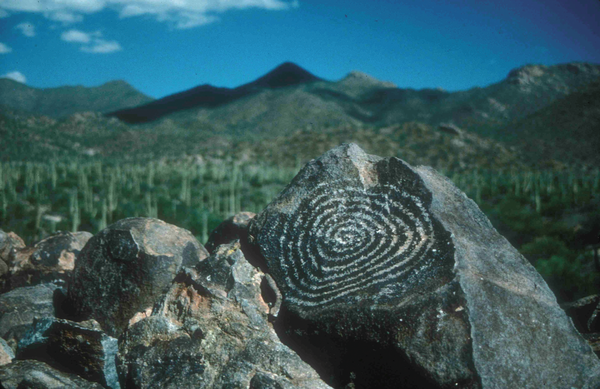One of the last states to be added to the Union, Arizona was once considered a mysterious place by early pioneers, where deserts mixed with mountains rich in gold. In Arizona Oddities: Land of Anomalies & Tamales, author Marshall Trimble explores some of the most famous legends of Arizona, from lost mines to the story of Santiago McKinn. Read on for an excerpt from his new book, and pre-order your copy today!
Arizona is a place that lives by its myths and legends. The wild, untamed country that lies between New Mexico and California was a dry, desolate, sunbaked land of jagged mountains and barren deserts. Early immigrants on their way to California claimed the wind was hot as a dragon’s breath, rattlesnakes were as big around as wagon tongues, cowboys heated their branding irons by pointing them at the sun and the rivers were so hot that when people jumped in to cool off they would emerge with third-degree burns.
But those same jagged mountains bore treasures of gold, silver and copper that were beyond a Spanish conquistador’s wildest dreams. Arizona was a diamond in the rough. In time, railroads would be built, the truculent rivers would be harnessed and air conditioning would be invented.

What do people like most about Arizona today? In a word…or four, open spaces and lifestyle. Arizona is the sixth-largest state in the nation. All of New England plus Pennsylvania and Delaware would fit inside its boundaries. Open spaces? Some 90 percent of the people live in just 2 percent of the land. There are ninety-two wilderness areas and thirty-two mountain peaks over ten thousand feet in elevation. The state boasts thirty-two state parks along with twenty-two national parks and monuments. In the wintertime, it’s possible to go snow skiing in the San Francisco Peaks in the morning and water ski on Saguaro Lake that afternoon.
Only one of the Seven Wonders of the World is a canyon, and that’s why Arizona’s official nickname is the Grand Canyon State. America’s two largest manmade lakes, Mead and Powell, border the state. Arizona is the only state that contains a part of all four of North America’s deserts: the Sonoran, Chihuahua, Mohave and Great Basin. The Sonoran Desert has the most diverse plant and animal life of all the deserts in the world. And thanks to such lofty mountain towns as Flagstaff, Williams, Alpine, Greer, Pinetop and Show Low, Arizona is only the eleventh-hottest state in the nation.
Arizonans like to call this place a land of anomalies and tamales because of the contrasts and contradictions that make the Grand Canyon State unique. For example, the first cattlemen were the Jesuit priests, who introduced cattle ranching in Arizona in the late 1600s, and the first “cowboys” were the mission Indians. The first great cattleman was a woman. Eulalia Elias ran the Babocomari Mexican land grant from 1827 to 1849. The namesake for America’s most famous lost mine, the Lost Dutchman, wasn’t a Dutchman, and he wasn’t lost. Jacob Waltz actually was a German. The Gunfight at O.K. Corral didn’t occur at the O.K. Corral. The storied fight between the Earp brothers and Doc Holliday against the McLaury brothers and Billy Clanton took place on Fremont Street between Fly’s Photograph Gallery and the Harwood House.

But wait, there’s more: the first white man to come to Arizona was a black man. Esteban was an African, scouting for the Coronado Expedition. He arrived in 1539. The Spanish colonial army commanding officer who founded the presidio in August 1775 that would become the city of Tucson was a red-headed Irishman named Hugo O’Conor. The Indians called him “Captain Red.” The first native Arizona cowboy movie star was a cowgirl. Dorothy Fay Southworth of Prescott headed out to Hollywood in the 1930s and was soon starring in western movies. In 1941, she married her favorite leading man, one of Hollywood’s most popular singing cowboys, Tex Ritter. She also was the mother of the late actor John Ritter. The world-famous Navajo Taco was invented in Window Rock by a Greek immigrant, and New York’s popular mayor from 1934 to 1945, Fiorello La Guardia, was raised in Prescott.
I can’t vouch for the veracity of this story, but it’s worth tellin’: Yuma County folklore says an old harridan by the name of Latrina Passwaterowned a ranch down along the Colorado River near Yuma. Her west pasture backed up to the river, which was known for changing its course without warning. She looked out one morning to find it had cut a new path around the east side of her place. A local newspaper reporter rode out and asked Latrina what she thought of becoming a Californian.
With a straight face, she replied, “That’s okay with me. I don’t think I could stand to spend another summer in Arizona anyway.”

